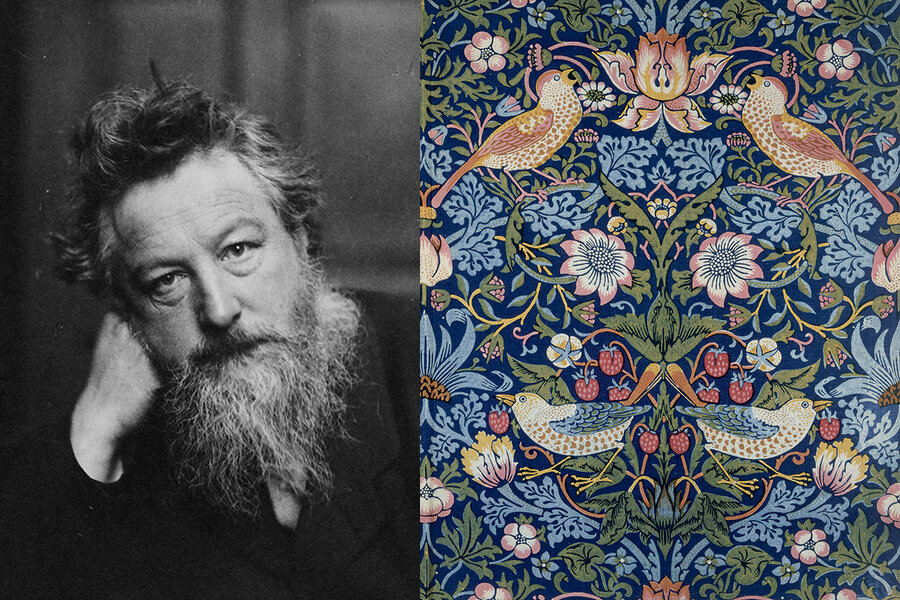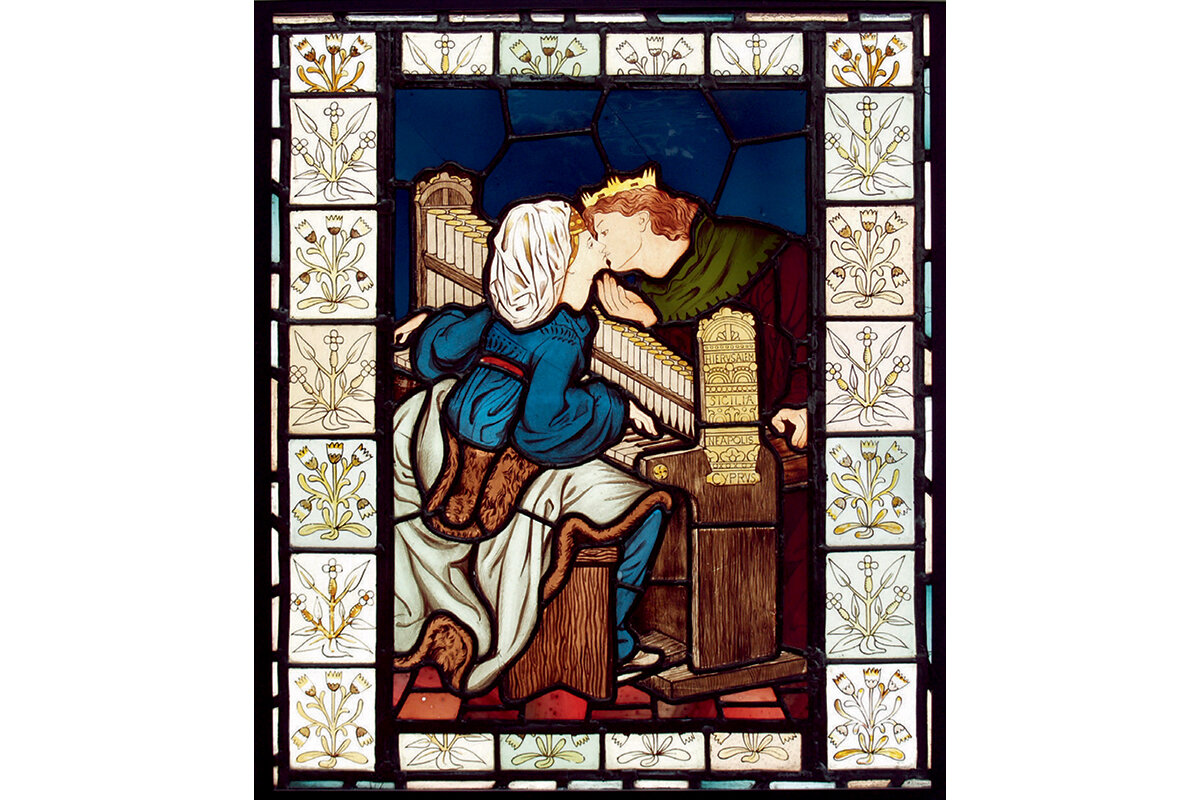For designer William Morris, beauty was key to happiness
Loading...
Behind the exquisite floral wallpaper lurks a social reformer. British designer William Morris (1834-96) is today best known for his lush, garden-inspired patterns for wall coverings, but his lifework encompassed far more than mere decoration. He sought nothing less than to overturn what he considered the deleterious effects of industrialization on Victorian society. And his artistic influence continues today, not only at London’s Victoria and Albert Museum, an institution he helped shape, but also as inspiration to contemporary artists.
A gorgeously illustrated book, titled simply “William Morris,” edited by Anna Mason and released by the Victoria and Albert Museum, offers a detailed portrait of the man, his work, and the values that fueled both. Even the dust jacket is embellished with one of Morris’ elegant designs from the museum’s extensive archives of decorative art. The book, with essays by more than a dozen experts, lays out the varied aspects of Morris’ life as an artist, designer, poet, educator, entrepreneur, preservationist, and political activist. Each role fed the others, and nourished his restless and fertile mind.
Morris was considered an outlier by his contemporaries, who were busy either extolling Britain’s growing industrial might or profiting directly from it. Morris was dismayed by the increased mechanization that he felt robbed workers of their dignity and the potential for creativity in their work. He also believed that mass-produced goods were inherently inferior, that their manufacture led to waste and environmental degradation, and that their shoddiness reflected poorly on the household for which they were purchased. His best-known dictum was “have nothing in your houses that you do not know to be useful, or believe to be beautiful.”
Why We Wrote This
Luxury goods and social reform don’t often come from the same place. For textile artisan, tastemaker, and social reformer William Morris, his values were inseparable from his work.
He set out to address both worker alienation and consumer taste through a revival of the craft traditions that had flourished in medieval Europe from the time of the building of the great cathedrals. These church edifices were complete works of art, and showcased the labor of hundreds of skilled workers, from stone carvers to stained-glass makers. Morris, who considered becoming an architect, visited cathedrals in France and Belgium as a young man, and was profoundly moved by the experience. He was inspired by how all the arts came together into a glorious whole, with each worker’s individuality still apparent and yet blended into the overall design. It filled him with hope.
As part of replicating this medieval-artisan model in Victorian England, Morris decided to learn the skills involved. Over the years, he mastered painting and drawing, stained-glass making, textile making, weaving, and bookbinding. “He never designed anything he did not know how to produce with his own hands,” wrote an early biographer. In 1860, Morris and a group of influential artist friends formed a company that sold custom furnishings and a full range of decorating services.
The company’s painted cabinetry, stained glass, and wall hangings portrayed stories from Chaucer and King Arthur, along with characters from Greek mythology and the Bible. Morris and his cohorts chose strong, saturated colors, especially blues and reds, for their designs. The colors were inspired by those Morris had seen in the stained-glass windows of the cathedrals he visited. Before long, wealthy clients – from British nobles to American industrialists – began commissioning goods from the company.
With the success of his venture, Morris faced a conundrum. He was keenly aware that the furnishings were too expensive for ordinary people, and this did not sit well with his values. In the 1870s, he took a two-pronged approach: He became active in socialist causes on behalf of working-class people and also took control of the company, expanding it to include the training of workers and the selling of less expensive, but still high quality, merchandise. Morris oversaw all aspects from design to production, and from management to marketing. His London retail shop was likely one of the earliest interior design showrooms, with products arranged to demonstrate how pieces looked together. Morris & Co. became known for high-quality, well-made goods.
Morris’ political opinions did not seem to hurt his business. His designs conveyed a love of the natural world and a buoyancy that continued to appeal to clients – and still attracts admirers today. The patterns of flowers, vines, leaves, birds, and other animals suffuse his designs with joy. Many of Morris’ wallpaper and textile designs have never gone out of production, although now they are machine printed, rather than block printed by hand.
The name Arts and Crafts was given to the style of architecture and furnishings that Morris developed, and the movement spread to northern Europe and North America in the late 19th and early 20th century. It influenced architecture as well as interiors, although in greatly simplified form in the United States. Frank Lloyd Wright’s early prairie-style homes, with their stained glass and custom-designed furnishings, reflect an American variation on the style. In California, the architecture firm of Greene & Greene designed structures that became known as American Craftsman. In upstate New York, Gustav Stickley made furniture that became synonymous with Arts and Crafts.
The social and political component of Morris’ work, and especially his message of reform, did not make the jump to America, one of the book’s essayists explains, although Morris was a hero to at least two important social reformers, Jane Addams and Ellen Gates Starr, who founded Hull House in Chicago to offer community services, literacy classes, and arts and crafts workshops to newly arrived immigrants. The two women kept a portrait of Morris in a place of honor on the wall. Although he never traveled to the United States, his daughter, May, was able to visit Hull House.
Morris certainly inveighed against the social ills of his time, but he never lost his positive outlook. His critiques of injustice were “always balanced by an optimistic and inspiring vision of what a better future might look like,” according to another essayist. “For him, beauty was a ‘positive necessity’, not a luxury but essential to human happiness.”
April Austin is the Monitor’s books editor.









